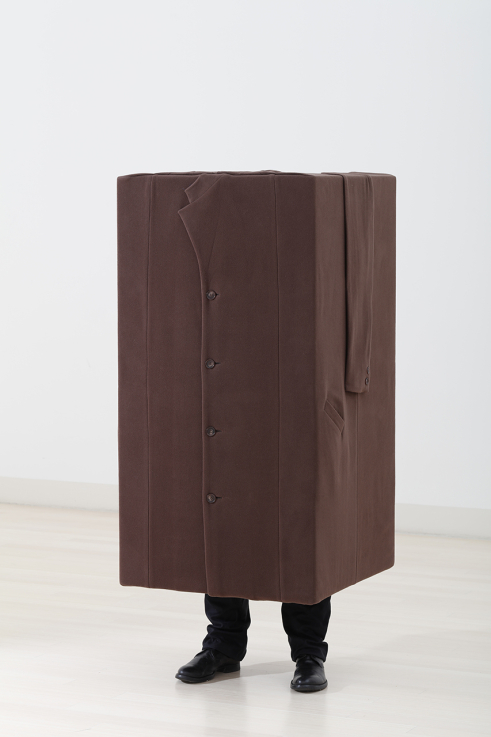Erwin Wurm, 2018
ERWIN WURM has been working with textiles and clothes for about thirty years. Clothing, which is the boundary between inside and outside, embodies the demarcation between the outside world and the self in terms of human existence, and also carries many cultural-social symbols. In exploring the possible boundaries and role of sculpture, the artist is also searching for the materials and devices that convey the sculptures’ meanings. Broadening the range of the mediums of visual arts, he turns to non-traditional sculptural materials: he experiments with textiles, paperand plastics (Textile Objects – Clothes Sculptures). In the sculptural sense, the woven-stitched, elastic material is the opposite of the traditional sculptural elements of mass, weight, volume and surface, just as the altered proportions represent a departure from the scales of the human body and the canon of fine art representation. Wurm erases the original meaning and function of the everyday garments we all know, while the design retains the cultural components of the original object. The worn garment, as a social signifier, provides a wealth of information about the wearer’s life, social status, fashion and time. We use clothing to define our self-image we wish to project to the outside world, ultimately creating our own “social sculpture”. Clothing sculptures represent this process of social sculpture through abstract forms. Wurm created his Hermes series in 2008, commissioned by and in collaboration with Veronique Nichanian, head of the menswear division of the eponymous famous fashion house, and exhibited in the luxury brand’s Paris showroom and in other flagship stores in major cities. By presenting garments as status symbols with a meaning of their own, almost entirely detached from the human body, and stretched over cubes, bricks or other forms, he highlights the symbolic layer of meaning that overrides practical function. The limbs attached to the dressed-up abstract forms, despite their anthropomorphic nature, further highlight the grotesque nature of the works.
